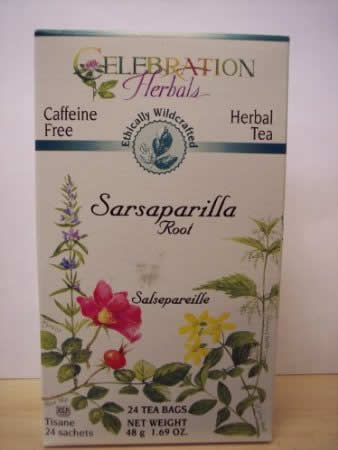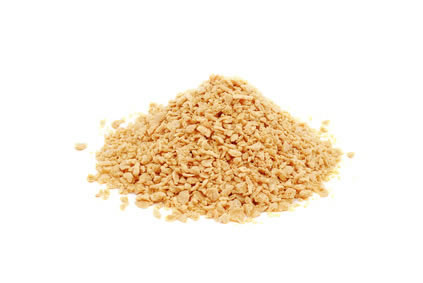Guava (Psidium guajava) is a tropical fruit. Large quantities of the guava fruit are produced in Colombia, Brazil, Mexico, and Venezuela. The whole of the guava fruit along with the rind and the seeds is edible. The fruit, leaves, and juice are used as remedy.
Guava Benefits
 It is considered a super fruit, including vitamin C, polyphenols, caratenoids, lycopene, lutein, cryptoxanthin, beta-carotene, potassium and manganese. Vitamin C contained in the guava is 4 times more than vitamin C contained in oranges. In laboratory experiments, extracts from apple guava leaves or bark are implicated in medicinal effects against bacterial infections, inflammation, pain and cancer.
It is considered a super fruit, including vitamin C, polyphenols, caratenoids, lycopene, lutein, cryptoxanthin, beta-carotene, potassium and manganese. Vitamin C contained in the guava is 4 times more than vitamin C contained in oranges. In laboratory experiments, extracts from apple guava leaves or bark are implicated in medicinal effects against bacterial infections, inflammation, pain and cancer.
Diabetes
Guavas help slow down the sugar absorption in the body and are hence helpful to diabetic patients. Researches have shown that a diet that is high in fibre is linked to a reduce risk of developing Type 2 diabetes (non- insulin-dependent diabetes mellitus). Compounds in the guava leaf tea inhibit the absorption of 2 types of sugars, sucrose and maltose, helping to control blood sugar levels after meals. According to a research reported in 2010 in Nutrition and Metabolisme, of leaf tea inhibits alpha-glucosidase enzymes.
Antioxidant
Vitamin C is an important antioxidant found in the guava fruit. Antioxidants block some of the damage caused by free radicals, substances that damage DNA. Antioxidant properties of vitamin C have been demonstrated in many experiments in vitro. The role of vitamin C in the functioning of immune cells is well proven. Vitamin C has been shown to stimulate both the production and function of leukocytes, particularly neutrophils, lymphocytes and phagocytes. Lymphocytes produce antibodies that work along with phagocytes to fight infection. A study reported in the journal “Cancer Letters”demonstrated that oil derived from the guava inhibited the growth of cancer cell lines.
Beta-Carotene Lutein and Lycopene
Carotenoids are natural pigments which are synthesized by plants and are responsible for the bright colors of different vegetables and fruits. The carotenoids absorb light energy of specific frequencies and transfer it to chlorophyll for use in photosynthesis. Beta carotene has strong antioxidant effects, helps the body scavenge free radicals, therefore limiting the damage to cell membranes, DNA and protein structures in the cell. Lutein are carotenoids found in the human eye. A study published in the Journal of the American Medical Association provided the of evidence that lutein supplements, taken in capsule form 6-30 mg per day, can lower the risk of macular degeneration up to 43 percent. Lycopene has powerful antioxidant properties and researches indicate that it can help avoid certain cancers, macular degeneration and heart disease. 10 to 30 milligrams per day has been found to be effective in combating free radicals. In addition to preventing oxidative damage to cell membranes, lycopene can avoid oxidation of proteins and DNA.
Potassium
Guava contains high potassium. Potassium is an electrolyte that is necessary to electrical reaction in your body, including heart. A normal potassium level is between 3.5 and 5.0 mEq/L. Inadequate potassium is defined as a potassium level below 3.5 mEq/L. A diet too high in salt and too inadequate in potassium doubles the risk of death from heart disease, according to a “Center for Disease Control” study led by researcher Elena V. Kuklina. Patients hospitalized after a heart attack who had blood potassium rates of between 3.5 and less than 4.5 mEq/L had a lower risk of death than patients with potassium rates that were higher or lower than this range, according to a research in the January edition of “JAMA“.
High Blood Pressure
Guava it decreases blood pressure.High blood pressure is a risk factor for congestive heart failure, heart disease, and stroke. In clinical trials, the usage of guava fruit for twelve weeks was shown to decrease blood pressure by an approximately 8 points. Also, guava extract was reported to be a strong anticoagulant agent in a study reported in 2007 in Food Chemistry.
Fiber
Guava is rich in dietary fiber. The highly soluble fiber works as a laxative and avoids constipation. The fiber content helps protect the colon mucous membrane by decreasing exposure time to toxins. A medium-sized guava includes approximately 36% of the recommended daily fiber. This fruit is also contain pectin that helps in promoting digestion and improving appetite.
 According to ayurvedic medicine, Emblica officinalis may be used as a rasayana to promote longevity, and has also been used to increase digestion, developed heart health, helps purify blood and stimulate hair growth.
According to ayurvedic medicine, Emblica officinalis may be used as a rasayana to promote longevity, and has also been used to increase digestion, developed heart health, helps purify blood and stimulate hair growth.  Tryptophan (molecular formula is C 11 H 12 N 2 O 2) is one of the essential amino acids that the body cannot produce. Was discovered by Dr. Frederick Hopkins in 1901. L-tryptophan plays an critical role in the production of serotonin and melatonin. These chemical messengers carry nerve impulses from one cell to other. The first phase in synthesis of serotonin is the transformation of tryptophan to 5-HTP by the enzyme tryptophan hydroxylase. The body uses tryptophan to create 5-HTP (5-hydroxy-tryptophan), which is then changed to serotonin. Serotonin is necessary for sleep and mood regulation and transmits nerve impulses from the brain. Researches show that individuals who suffer with depression have low levels of the tryptophan. Body cannot produce tryptophan on its own. Therefore, can be obtained through supplements or through food. Also, body uses the tryptophan to create vitamin B3. Vitamin B3 promotes healthy nervous system function.
Tryptophan (molecular formula is C 11 H 12 N 2 O 2) is one of the essential amino acids that the body cannot produce. Was discovered by Dr. Frederick Hopkins in 1901. L-tryptophan plays an critical role in the production of serotonin and melatonin. These chemical messengers carry nerve impulses from one cell to other. The first phase in synthesis of serotonin is the transformation of tryptophan to 5-HTP by the enzyme tryptophan hydroxylase. The body uses tryptophan to create 5-HTP (5-hydroxy-tryptophan), which is then changed to serotonin. Serotonin is necessary for sleep and mood regulation and transmits nerve impulses from the brain. Researches show that individuals who suffer with depression have low levels of the tryptophan. Body cannot produce tryptophan on its own. Therefore, can be obtained through supplements or through food. Also, body uses the tryptophan to create vitamin B3. Vitamin B3 promotes healthy nervous system function. This plant, used to treat
This plant, used to treat  A critical factor in healthy brain and nerve transmissions is the presence of cellular substance named acetylcholine. Lecithin is used by the body to produce the neurotransmitter acetylcholine, helping to keep a limpid mind.
A critical factor in healthy brain and nerve transmissions is the presence of cellular substance named acetylcholine. Lecithin is used by the body to produce the neurotransmitter acetylcholine, helping to keep a limpid mind.